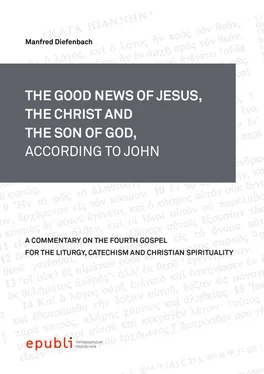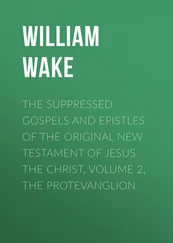v. 28:However, she “ ran ”/“ went back ” – note the verbum compositum “ ap -érchomaı” (v. 28b – cf. vv. 3b, 8a) into her town without her “ water pot/jar ” (v. 7 – cf. 2:6–7), knowing herself the moral Jewish tradition. Her main aim was to draw water, but after her talk with Jesus she became an “ambassador” who had to inform/proclaim/call the citizen of Sychar that
v. 29:Jesus is the “ Christ ” (cf. v. 25c, d) – therefore “ come ” and “ see ” (cf. 1:39) this prophetical (vv. 17d–18d, 19c) “ man ” (cf. vv. 39–42).
v. 30:The Fourth Evangelist describes their reaction that they “ went out ” – note the verbum compositum “ ex -érchomaı” in verses 30a, 43a – “ of the town ” Sychar and “ came to ” (met) Jesus (cf. v. 40) – note the verb “érchomaı” in verse 30b as in verse 27a.
# The Dialogue between Jesus and His Disciples (vv. 31–38)
v. 31:“ In the meantime/meanwhile ”, that means between their walk from Sychar to the well of Jacob, Jesus’ disciples (cf. v. 8) speaks with His disciples because of their order– note the imperative“eat” in verse 31b 2.
v. 32:Jesus (cf. vv. 32b–c, 34b–38d), the “ rabbi ” 332(v. 31b 1), reflected on the “ eating ” of “ food ” (in Greek “brõ s ɩ s ” in v. 32b and 6:27, 55 or “brõ ma ” in v. 34b) on earth (cf. vv. 31b, 33b) and the (heavenly) “ food ” (vv. 32b–c, 34b – cf. 6:27, 55) and the harvest of the “ fruits ” in the form of an agricultural example of the growing of “ seeds ” and the reaping of “ fruits ” (cf. vv. 35b–36c), a proverb (cf. v. 37a–d) and a conclusion (cf. v. 38a–d).
v. 33:Like in 16:17, His disciples did not understand His divine, spiritual, theological “words”; therefore they “ said/asked to each other ”: “… who brought Him to eat ”?
v. 34:Jesus answered them that He has to “ fulfil ” 333(cf. 19:28, 30) God’s “ work ” (cf. 5:36; 17:4) and His “ will ” (cf. 6:40; 7:17; 9:31). Therefore He was “ sent ” 334on earth. That is the special relationship between Him and His “ Father ” (cf. 5:30; 6:38–39; 20:21) in the Christological/eschatological context.
vv. 35–36:He explained this eschatological 335theme with the help of an agricultural comparison/parable of the time of “four months ” (in Greek “tetrá menos ” in v. 35b) from the sowing – for example, wheat – (seedtime in spring) by the “ sower ” 336until the “ harvest ” 337by the farmer in the summer in verses 35–36 like in Mark 4:26–29. After the “ harvest ”, both – the sower and the reaper – are “ rejoiced / glad ” 338together (cf. Isaiah 9:2).
v. 37:Then He puts the “ proverb ” (in Greek “ ho l ó gos ” – literal: word) of a sower at the beginning and a reaper at the end:
“ One is who sows ” (vv. 36c, 37c) “ and
another / is / who reaps/harvests ” (vv. 36a, 38b).
v. 38:Jesus concretizes who are the sowers and the reapers:
So the sowers are Jesus (cf. v. 38a), the Jewish fathers and prophets as well as John the Baptist (cf. v. 38c) who worked hard/“labour ed ” 339(vv. 6b, 38b, c – cf. v. 38d).
However, the reapers are His disciples 340(“ you ”) – then (and now 341) (cf. Matthew 9:37) – who “ Jesus sent ” 342(cf., for example, John 17:18) to “ reap ” (vv. 36a, 37e) the “labour” of others on their behalf.
+ The Indirect Conversion of the Samaritans by Jesus (vv. 39–42)
v. 39:After the conversation between Jesus and His disciples (cf. vv. 31–38), the Samaritan people of Sychar who “ believed ” (vv. 21b, 39a, 41, 42b – cf. vv. 48c, 50c, 53e–f) in the Samaritan woman’s “ words ” (vv. 39a, 41) respectively her “ testimony ” (in Greek “ martur é o ” [verb] in vv. 39b, 44a)
v. 40:“ came to Him ” and “ asked / requested ”/invited Him “ to stay with them ” (v. 40b, c). The Evangelist relates that He “stayed” in Sychar “ two days ” (vv. 40c, 43 – cf. John 11:6) and
v. 41:plenty of them “ believed ” (vv. 39a, 42b) in Him because of “( His ) words ( )” (cf. v. 39a).
v. 42:In this way, the Samaritans acknowledge and decide for themselves for Jesus as the “S aviour 343 of the world ” (cf. 1 John 4:14) – note the allusion to the Roman Caesars 344– because of their sharing of “ His words ” (v. 41) and not only from hearsay of her “ word ” (v. 39a – cf. v. 29). In other words: “The Samaritans believe first on the basis of the indirect word by the Samaritan “woman who testified about Jesus and then on the basis of their own experience of Jesus’ words” 345(cf. vv. 39a, 41).
The Samaritan woman/housewife (cf. vv. 28–30) confessed the citizen of “Sychar” as His female “disciples” 346that Jesus is the “ Christ ” (vv. 25c, 29e – note also the titles 347in her mouth: the “ Jew ” [v. 9b], the “ Lord ” [vv. 11b, 15b, 19b], a “ prophet ” [v. 19c]) like Martha (cf. John 11:27) and Mary of Magdalene (cf. 20:18) – note the Galilean women in John 19:25; Mark 15:40–41; 16:1; Matthew 27:55–56, 61; Luke 8:2–3; 10:38–42; 23:49; 24:1, 10. At the end, the Samarian citizen of “Sychar” believed in Him (cf. vv. 39–42) as the “ Saviour of the world ” (v. 42d and Judges 3:9, 15; Esther 8:12; Wisdom of Solomon 16:7). This messianic title is like a “final chord” 348of Jesus’ meeting with the Samaritans – note “the contrast between the more open faith of the Samaritans and the less adequate belief of those at Jerusalem (cf. John 2:23–25) and Nicodemus” 349(cf. 3:1–21).
2.2.9 First Setting as a Journey Note 350(vv. 43–45 351)
As in verses 1–6, we have a double setting (cf. vv. 43–45, 46a–c) here again.
v. 43:The Fourth Evangelist continues with a journey note of Jesus’ renewed coming to “ Galilee ” (cf. v. 3) with the same words “ the two days ” (in Greek “ dúo heméras ” in vv. 40c, 43) to bridge the scenic-dialogical scene in verses 4–42 with the story of His distant healing of the royal official’s son from Capernaum in Galilee in verses 46–53/54. The name of the northern district “ Galilee ” (vv. 43, 45a, 46a, 47b, 54b) is the keyword of the journey note in verses 43–45 and of His healing in verses 46–54.
v. 44:A parenthesis of the Evangelist emphasizes that “ Jesus ” “ Himself ” pointed “ that / a / prophet ” (v. 19c) “{ has no } [ honour ] in the own hometown / country [ ] { }” (cf. Mark 6:4; Matthew 13:57; Luke 4:24).
v. 45:The Evangelist relates that “ the Galileans welcomed / received ” Jesus, “( having seen ) all ( ) that He had done in Jerusalem ” during their visit of the Passover “ feast ( ival )” (vv. 45d, e – cf. John 2.13).
Читать дальше












